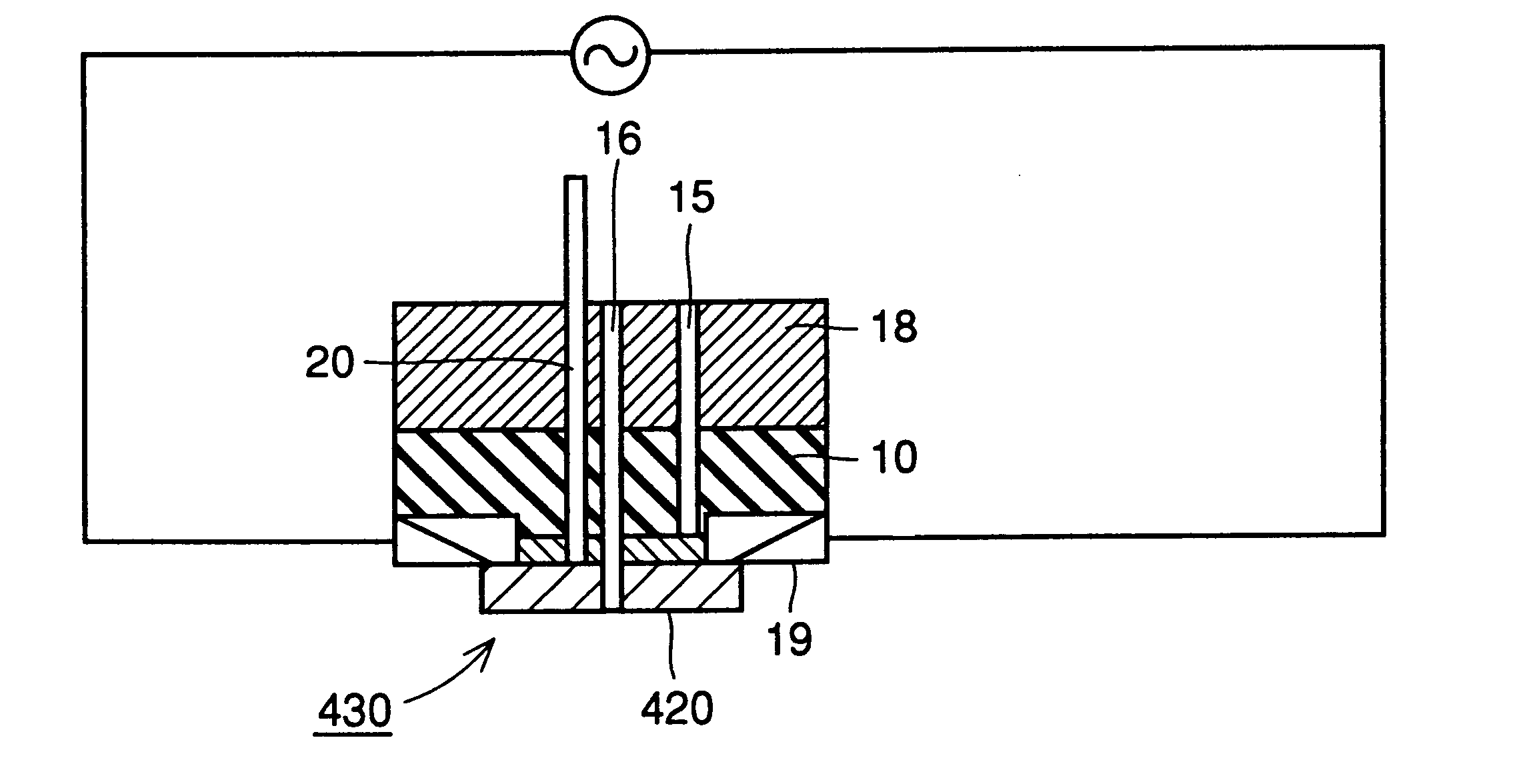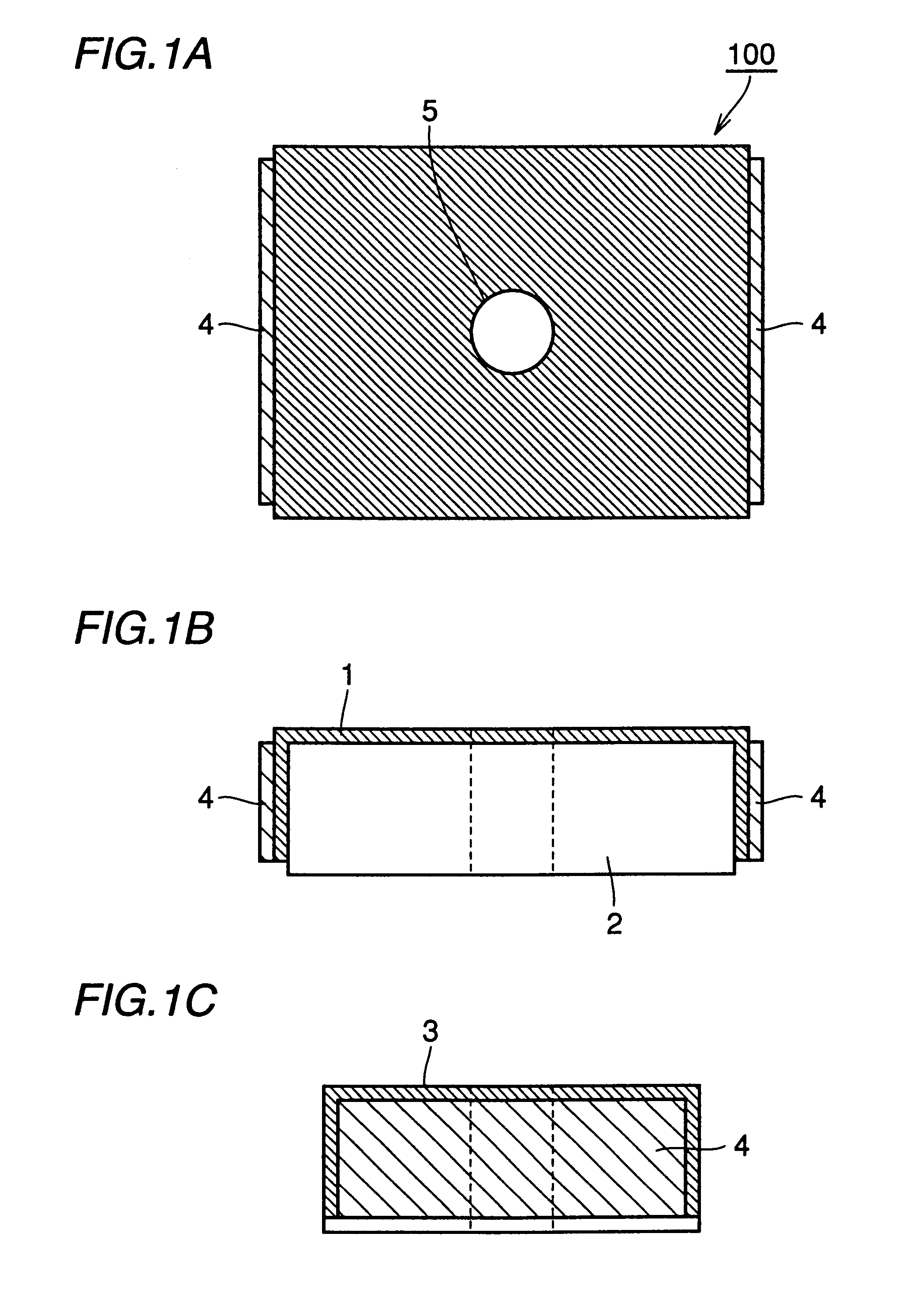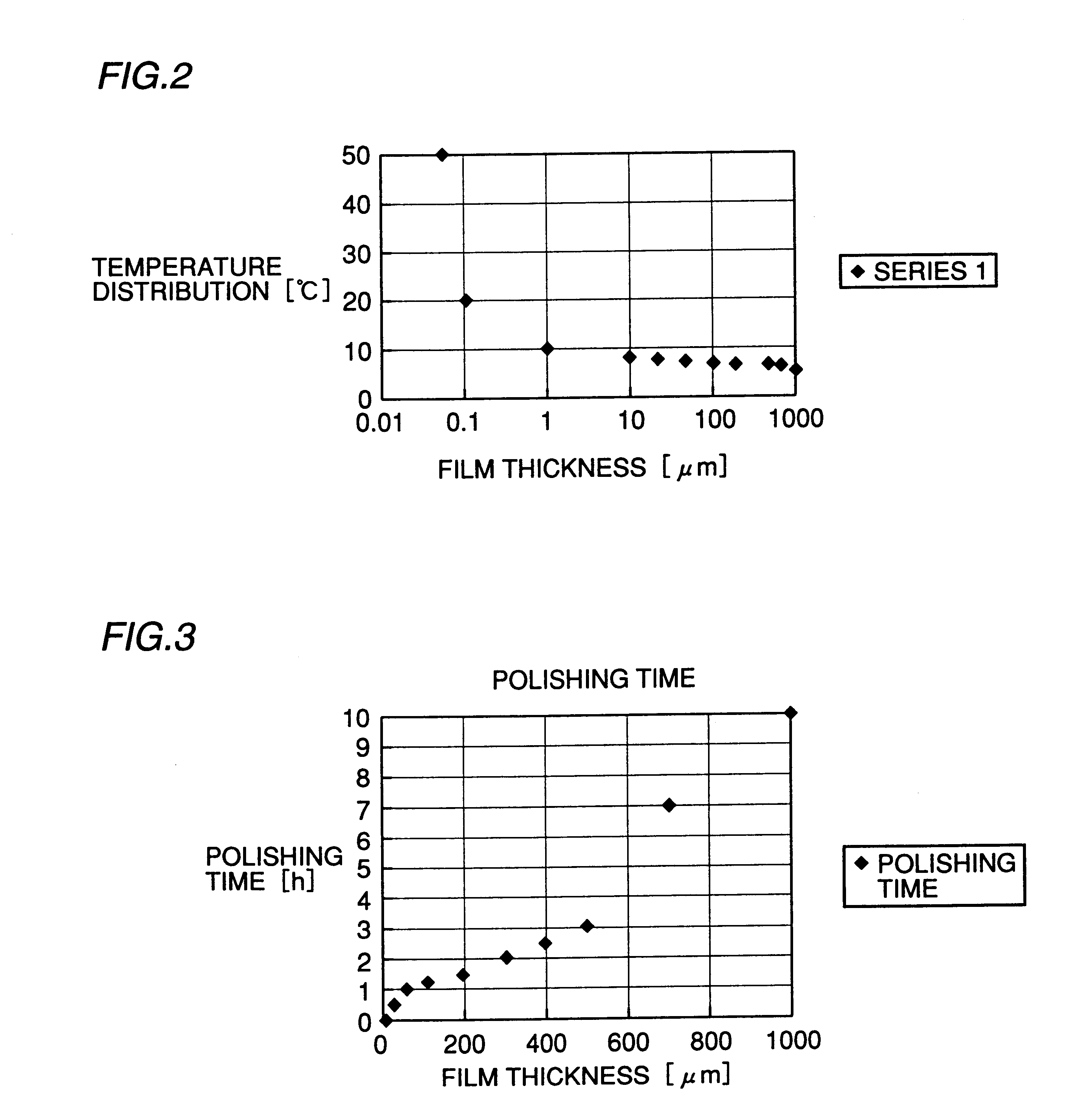Tool tip and bonding tool comprising the tool tip and control method for the bonding tool
a technology of bonding tool and control method, which is applied in the direction of natural mineral layered products, record information storage, water-setting substance layered products, etc., can solve the problems of diamond film distortion, difficult to reduce the time required for single bonding of semiconductor chips, and inferior heat respons
- Summary
- Abstract
- Description
- Claims
- Application Information
AI Technical Summary
Benefits of technology
Problems solved by technology
Method used
Image
Examples
concrete example 1
First, the structure of a tool tip 400 in this Concrete Example 1 is described with reference to FIG. 7A to FIG. 7C. A conductive polycrystalline diamond film 1 of about 10 .mu.m in film thickness and 8.times.10.sup.-3 .OMEGA.cm in specific resistance to which boron is added as an impurity is deposited by a vapor-phase synthetic method on a surface of 20 mm.times.20 mm of an SiC substrate 2 of 20 mm.times.20 mm.times.5 mm having one suction through hole 5 of about 1 mm in diameter on its central portion. Thereafter an insulating diamond film 6 is further deposited by 50 .mu.m on the conductive polycrystalline diamond film 1.
Both of the conductive polycrystalline diamond film 1 and the insulating diamond film 6 are formed by microwave plasma CVD with methane and hydrogen as gas.
The gas flow rates in this film formation are 5 sccm for methane and 500 sccm for hydrogen, and diborane of B / C=20000 ppm with respect to methane was added to the material gas during film formation of the cond...
concrete example 2
Concrete Example 2 is now described.
Referring to FIG. 13A to FIG. 13C, a conductive polycrystalline diamond film 1 of 8 .mu.m in film thickness and 8.times.10.sup.-3 .OMEGA.cm in specific resistance to which boron was added as an impurity was deposited by a vapor-phase synthetic method on a substrate 2 consisting of insulating polycrystalline diamond of 12 mm.times.12 mm.times.0.3 mm in a tool tip 420 in this Concrete Example 2.
As to growth of a boron-added layer, film formation was performed by thermal filament CVD with methane, hydrogen and trimethyl boron of 5000 ppm with respect to methane as material gas.
When a conductive polycrystalline diamond film synthesized by the same conditions was analyzed by SIMS, it was found that boron was contained therein by 800 appm.
After formation of the conductive polycrystalline diamond film 1, a suction through hole 5 of about 1 mm in diameter was formed on a central portion of the substrate 2 by excimer laser beam machining.
After forming the ...
concrete example 3
Concrete Example 3 is now described.
With reference to FIG. 17A to FIG. 17C, the structure of a tool tip 440 in this Concrete Example is described. A conductive polycrystalline diamond film 1 of about 10 .mu.m in film thickness and 1.times.10.sub.3 .OMEGA.cm in specific resistance containing a crystal fault synthesized and obtained with high methane concentration is deposited on a surface of 20.times.20 mm of an SiC substrate 2 of 20 mm.times.20 mm.times.3 mm having one suction through hole 5 of about 1 mm in diameter on its central portion.
Thereafter an insulating diamond film 6 is deposited on a surface opposite to the conductive polycrystalline diamond film 1 by about 50 .mu.m. Both of the conductive polycrystalline diamond film 1 and the insulating diamond film 6 were synthesized by microwave plasma CVD with methane and hydrogen as material gas. The methane flow rate during film formation of the conductive polycrystalline diamond film 1 was 50 sccm, and that of hydrogen was 500 s...
PUM
| Property | Measurement | Unit |
|---|---|---|
| Fraction | aaaaa | aaaaa |
| Fraction | aaaaa | aaaaa |
| Temperature | aaaaa | aaaaa |
Abstract
Description
Claims
Application Information
 Login to View More
Login to View More - R&D
- Intellectual Property
- Life Sciences
- Materials
- Tech Scout
- Unparalleled Data Quality
- Higher Quality Content
- 60% Fewer Hallucinations
Browse by: Latest US Patents, China's latest patents, Technical Efficacy Thesaurus, Application Domain, Technology Topic, Popular Technical Reports.
© 2025 PatSnap. All rights reserved.Legal|Privacy policy|Modern Slavery Act Transparency Statement|Sitemap|About US| Contact US: help@patsnap.com



